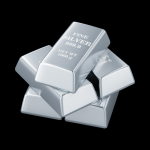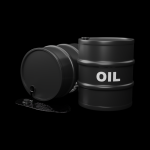
Commodities
On this page, you can find in-depth information about Commodities Trading. Whether you're new to trading commodities like oil and gold or seeking expert tips to refine your approach, TradingSheets.com is your ultimate guide to mastering the commodities market.
67% of retail investor accounts lose money when trading CFDs with this provider.
Commodities trading stands as a pivotal element within the global financial markets, offering investors the unique opportunity to engage in the buying and selling of physical goods such as crude oil, gold, wheat, and natural gas. Unlike traditional stock trading, which centers around shares of companies, commodities trading focuses on the raw materials that serve as the foundational inputs for various industries. The allure of commodities trading lies in its potential for substantial returns; however, it also encompasses distinct risks, including heightened market volatility and significant price fluctuations. A thorough understanding of market operations enables traders to leverage commodities effectively, thereby diversifying their investment portfolios and providing a hedge against inflationary pressures.
The commodities market is broadly categorized into two primary segments: hard commodities, encompassing metals and energy resources, and soft commodities, which include agricultural products. Each category presents its own set of opportunities and challenges, necessitating that traders either specialize or develop a comprehensive understanding of the unique characteristics inherent to each. Given the perpetual state of flux within the global economy, commodities trading continues to be an attractive avenue for traders aiming to capitalize on dynamic market movements.
Types of Commodities in Trading
Delving into commodities trading requires an initial comprehension of the various types of commodities available within the market. Commodities are generally divided into hard and soft categories. Hard commodities pertain to natural resources that are extracted or mined, such as metals and energy products. Conversely, soft commodities primarily consist of agricultural goods that are cultivated or harvested.
Energy Commodities: Energy commodities rank among the most extensively traded assets globally, encompassing crude oil, natural gas, and coal. The pricing of these commodities is profoundly influenced by global demand, geopolitical developments, and production rates. For instance, crude oil trading offers traders the opportunity to exploit price movements driven by decisions from the Organization of the Petroleum Exporting Countries (OPEC), disruptions in oil supply, or evolving demand patterns resulting from the transition toward renewable energy sources.
Precious Metals: Precious metals, including gold, silver, and platinum, are favored by traders seeking safe-haven assets during periods of market instability. Gold, in particular, holds significant importance as both a store of value and a hedge against inflation. During times of stock market turbulence, gold prices often experience an uptick, rendering it an appealing commodity for both long-term investors and short-term traders.
Agricultural Commodities: Agricultural commodities encompass products such as corn, soybeans, wheat, and coffee. These commodities are highly susceptible to variables like weather conditions, crop yields, and global food demand. For example, wheat prices may surge during a drought or decline following a bumper harvest. Traders specializing in agricultural commodities frequently employ seasonal trading strategies to capitalize on these predictable patterns.
Industrial Metals: Industrial metals, including copper, aluminum, and nickel, are integral to the manufacturing and construction sectors. As industrial production escalates, the demand for these metals typically increases, thereby driving prices upward. Copper, often referred to as “Dr. Copper” due to its sensitivity to global economic health, is particularly popular among traders aiming to assess economic strength and make informed trading decisions.
By diversifying across these various types of commodities, traders can mitigate risk and capitalize on market trends that uniquely affect each sector. A deep understanding of the factors influencing the prices of each commodity type is essential for constructing a robust trading strategy.
Mechanics of Commodities Trading
Commodities trading operates through several mechanisms, with futures contracts being one of the most prevalent methods. A futures contract constitutes an agreement to purchase or sell a specific quantity of a commodity at a predetermined price on a designated future date. This arrangement allows traders to speculate on commodity price movements without the necessity of owning the physical goods. Futures trading is characterized by high leverage, enabling traders to control substantial positions with relatively minimal capital, albeit with an accompanying increase in risk.
Spot trading represents another avenue for commodities trading, involving the immediate exchange of a commodity at the current market price. Unlike futures contracts, spot trading entails the prompt delivery and payment for the commodity. Spot markets are commonly utilized for commodities like oil and gold, where real-time supply and demand factors cause constant price fluctuations.
Options on commodities introduce an additional layer of flexibility. Rather than committing to a futures contract, options grant traders the ability to speculate on the price direction of a commodity without the obligation to buy or sell the underlying asset. This mechanism allows traders to potentially limit losses by only paying the premium for the option, making it a favored tool for risk management.
Commodities trading frequently transpires on major exchanges such as the Chicago Mercantile Exchange (CME) and the Intercontinental Exchange (ICE), facilitating global participation. A comprehensive understanding of these markets is crucial, as factors like worldwide demand, supply chain disruptions, and geopolitical tensions can significantly impact commodity prices. Success in commodities trading necessitates vigilant monitoring of these external factors and the ability to interpret them effectively.
Strategic Approaches in Commodities Trading
Navigating the inherent volatility of commodities markets requires traders to employ specific strategies that facilitate informed decision-making. While each commodity exhibits distinct behaviors influenced by supply, demand, and other external factors, several key strategies have demonstrated efficacy across the board.
Trend Following: Trend following stands as one of the most widely adopted strategies in commodities trading. This approach involves identifying and capitalizing on market trends—whether upward or downward—by analyzing historical price movements. Traders employing this strategy enter trades aligned with the prevailing trend and maintain their positions as long as the trend persists. For example, if crude oil prices exhibit a consistent upward trajectory due to tightening supply, a trader might initiate a long position and retain it until the trend reverses.
Seasonal Trading: Certain commodities, particularly agricultural products, display seasonal price patterns attributable to planting and harvest cycles. Seasonal trading leverages these predictable trends. Traders might anticipate elevated natural gas prices during winter months when heating demand surges or focus on agricultural commodities like corn, where prices escalate following a poor harvest season. An understanding of these cycles enables traders to capitalize on foreseeable price movements by entering trades in advance.
Mean Reversion: The mean reversion strategy operates on the premise that commodity prices will eventually revert to their historical averages, especially after significant price swings. This strategy is particularly popular when a commodity’s price has markedly deviated from its average due to temporary market disruptions. For instance, if gold prices spike amid short-term geopolitical tensions, a mean reversion trader might wager that prices will eventually normalize once the situation stabilizes.
Arbitrage Opportunities: Arbitrage in commodities markets entails exploiting price discrepancies between different markets or exchanges. A trader might purchase a commodity in one market where the price is lower and simultaneously sell it in another market where the price is higher. Arbitrage strategies demand a profound understanding of the markets and often necessitate swift execution, as price gaps tend to close rapidly.
By implementing these strategies, traders can tailor their approaches to align with the specific behaviors of each commodity, whether it pertains to energy resources, precious metals, or agricultural products. Achieving success in commodities trading hinges on a combination of timing, market analysis, and a thorough understanding of the external factors influencing supply and demand.
Conclusion
Commodities trading stands as one of the most dynamic and potentially rewarding arenas in the financial markets, offering exposure to tangible assets that are vital to the global economy. From the energy that powers industries to the agricultural goods that feed the world, trading commodities gives investors a powerful tool for diversification, speculation, and inflation protection. However, success in this market demands more than just ambition—it requires a disciplined approach, a solid understanding of supply and demand forces, and a commitment to continuous learning. Whether you’re drawn to the volatility of oil prices, the stability of gold, or the seasonality of grains, mastering commodities trading means staying informed, managing risk effectively, and refining your strategy over time. With the right mindset, tools, and preparation, traders can tap into the opportunities that commodities offer and build a resilient, future-proof portfolio.
How To Start Trading In 15 Minutes
Start Your Trading Journey with capital.com
Open a Real Money Account
Sign up with capital.com and start trading Commodities with as little as $100.
Open a Real AccountOR
Practice with a Demo Account
Not ready to trade with real money? Start practicing with capital.com’s demo account.
Open a Demo AccountCFDs are complex instruments and come with a high risk of losing money rapidly due to leverage. 67% of retail investor accounts lose money when trading CFDs with this provider. You should consider whether you understand how CFDs work and whether you can afford to take the high risk of losing your money.











